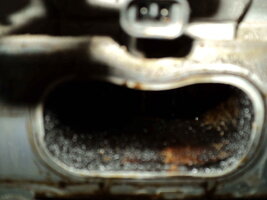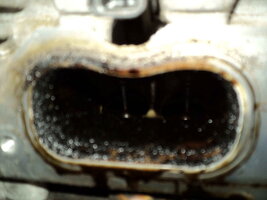Spraying anything capable of loosening Carbon and Oily Deposits might do more harm than good without first removing the Intake Manifold
(NOT a Trivial Job!) and then carefully cleaning the Intake Ports with the following reasons for using such care whenever doing so:
THIS Video will prove very instructive on How to Perform the R&R of the GM 4.2L Engine Intake Manifold to replace the Three "Figure 8" Gasket Sets and the
*** Short Rubber "Elbow" he mentions herein:
*** If it comes down to cases and that IM "Elbow" PCV-Like Tube gets damaged during this R&R in order to access that damned hidden single Trapped IM Fastener... THIS is the GM OEM Factory Part you'll want use to replace it:
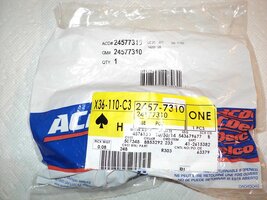
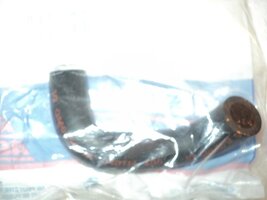
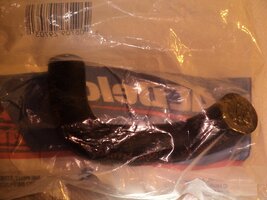
But first, let's Differentiate between the "Breathing" locations in the LL8 Motors and describe the types of Carbon and Oily Dirt Build Up therein:
Intake Manifold to Intake Ports in the Driver's Side of the GM 4.2L LL8 Aluminum Engine Head:
(1) On High Mileage Motors... Carbon Trapped Compression Rings reduces the ability of the Pistons to apply the correct "Squeeze" or Quench for the Fuel Air Mixture BTDC.
(2) Excessive collections of Carbon Deposits will HOLD HEAT and with sufficient accumulation, can increase the Combustion Ratio by enough of a factor to cause Pre-Ignition when using Non-High Test Gasoline.
(3) The other artifact of having Trapped Compression Rings is the passage of Incomplete Combustion By-Products into the Lower Rectangular Engine Block that tends to move through the openings in the Engine Vacant spaces into the underside of the Valve Cover and thence... through the "Elbow Hose", then through the Air Plenum to get ingested into the Intake Air Stream.
(4) In this manner, Oily, Dirty Gas Fume riddled Air gets routed through the Throttle Body and tends to collect just above the entrance inside the Intake Ports as "Black Muck". THESE Intake Port Images serve to Illustrate this phenomena on a 2004 4.2L LL8 with around 160,000 Miles in its Rear View Mirror:
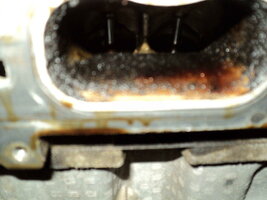
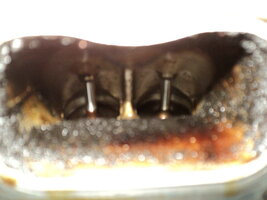
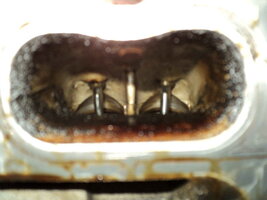

(5) The important distinction here though is that ordinarily, NO FUEL is mixed in with the Inhaled Air at this point and the Incoming Air Stream tends to be COLD. So that "Carbon Blow-By" Gunk tends NOT to Bake in place on the Intake Ports and Valve Stems and can be easily wiped out using Berryman's B-12 Spray Solvent on Blue "Scott" Shop Towels using caution NOT to allow collections of Greasy Dirt to fall down past any Open Intake Valves.
Exhaust Valve Ports to Exhaust Manifold in the Passenger Side of the GM 4.2L LL8 Aluminum Engine Head:
(1)
Here is where things can get UGLY... The Exhaust Valves here are quite a bit smaller in their Outside Diameters because it is MUCH EZR to Evacuate a Cylinder under Pressure while 'Exhaling' Exhaust Gasses than it is to 'Inhale' Fresh Air along with Atomized Jets of Fuel through the Plugged In EFIs well inside of the Ports during the 6 Cylinder Intake Strokes.
(2) Even with Four Valves Per Cylinder... it can still take a while for the Exhaust Gasses to work their way around the lips of the Opened Valves and around the Valve Stems, remembering that the Exhaust Stream here is
HOT AS HELL during these events.
(3) The Results are that the Un-Burned Carbon and Particulate matter left over as the 'Sticky Residue' during each Exhaust Stroke allows all of that stuff an opportunity to
STICK SOLID and Bake On HARD around the curved edges where the Valve stem swells inwards to meet the edges of the Exhaust Valves and around the Valve Seats.
(4)
THIS is where that Carbon Crap and Poorly Combusted By-Products will either Huff & Puff through the bottom of the Crankcase to get re-ingested and pass through the Intake Manifold ... OR... Burn Solid along the Valve Seats and Stems and collect and confound the smooth emptying of the Cylinders of this Exhaust "Smoke" through the Exhaust Manifold:
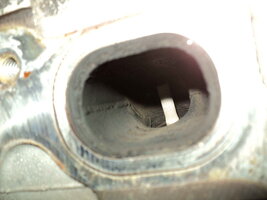
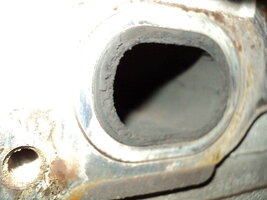
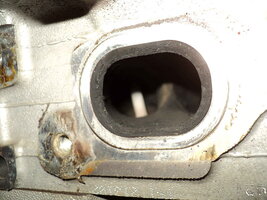
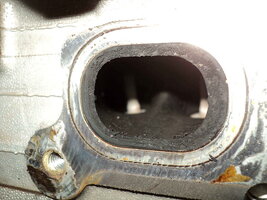
(5) Unlike 4 Stroke Combustion Engines Designed prior to Catalytic Converters... Modern Engines with Smog Controls using the CATs working at nearly 900 Degrees Fahrenheit that will literally 'Cook" away most of those Incomplete Combustion By-Products and thereby, conceal most of the evidence that perhaps the Cylinders and Rings are Worn, perhaps the Valve Guides in the Engine Head are Worn... or any excessive amount of "Gray Smoke" indicating Poor Compression and Combustion being present leaves us with almost No Visible Clues to make this determination.
(6) The collection of these Burned-On Carbons Deposits serve to obstruct the Smooth and Complete Flow of the Exhaust Stream and make way for Fresh, Clean Air and Fuel Spray into all cylinders at all times and serves to reduce Engine Power and Fuel Efficiency.
(7) In this manner, the Intake Air Stream becomes contaminated with unregulated "Old Fuel Vapors and Incomplete Combustion Residues" that might confuse to the PCM when trying to read the O2 Sensor Inputs and make correct calculations for "How Much Fuel to Deliver?". If you think I'm kidding...
Pull out the Oil Level Dip-Stick and Smell the Tip for the presence of GASOLINE.
(8) Incomplete Combustion, By-Pass or Blow-By has the additional negative side effect of contaminating the entire Engine Oiling System with Unburned Fuel and Excess Smoky Carbon Soot that can coat the innards of everything 'just below the waterline'.
(9) Over time and and after Several Hundred Thousand Miles of Operation, this creates a "Sticky, Black Lacquer" that can decorate the surfaces of the Lower Engine Block and Rotating Assembly with enough Carbon Deposits over time that they'll tend to Flake Off from Engine Vibrations and Motions and often then get ingested
(or Gradually Obstruct or Block OFF) in through the Oil Pick Up Tube and eventually fill the Fan-Fold Paper Sections inside of the Oil Filters with what looks like "Black Coffee Grounds".
(10) The Gerotor Oil Pump inside the front Timing Cover of the GM Atlas Vortec 4200 Motors is capable of pumping over 11 Gallons of Motor Oil Per Minute at nearly 65 PSI at Higher RPM Levels and perhaps as low as 12 PSI when Idling around 600 RPM. So just consider all of the "Extra Carbon Baggage" that gets mixed into the Motor Oil inside Carbon Laden Motors.
(11 ) Anyone who tries to gauge
(or S-T-R-E-T-C-H) their Oil Changes to the Higher Mileages of around 5,000 Miles in between instead of every 3,000 Miles is just asking for trouble. This is because Older Motors
NEED their "Blood Transfusions" on schedule to COMPLETELY Replace any Gas-Fuel vapor and Carbon Contaminated, Low Lubricity Motor Oils
SOONER rather than LATER as they can still Age Gracefully and keep their Reputations as being
ONE HELLUVAN EXCELLENT In-Line Six Cylinder Engine.










